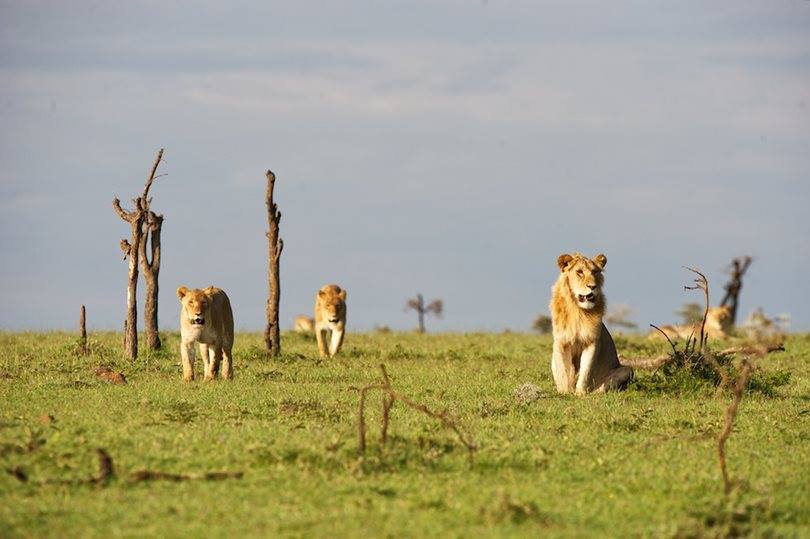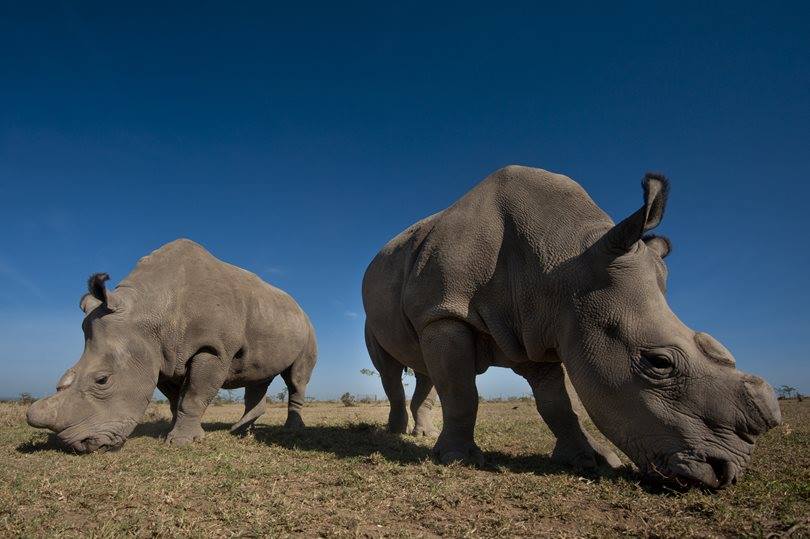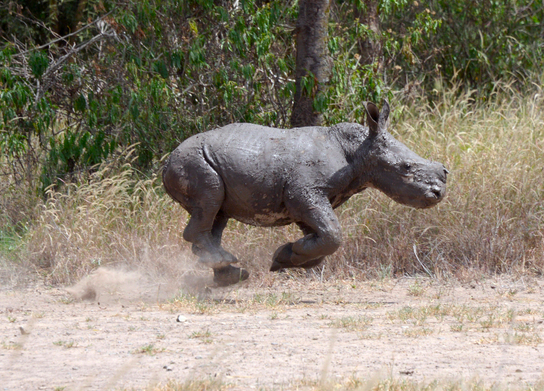Ol Pejeta: Champions of Conservation
Champions of Conservation
Ol Pejeta is a place that embodies hope. Shouldered in between Mount Kenya and the Aberdare Mountains, Ol Pejeta Conservancy has proven that conservation and community development are not only mutually compatible but can also be mutually beneficial.
Dedicated to conserving wildlife, providing sanctuary to animals and generating income through ecotourism ventures, Ol Pejeta is a not-for-profit wildlife conservancy that re-invests funds earned back into conservation and community development projects. Working closely with the Kenyan Government, the Conservancy operates according to the most rigorous international standards and has been hailed as a true success story of wildlife and community conservation in East Africa.
To this end, Ol Pejeta hosts a substantial complement of each of the Big 5 (lion, Cape buffalo, leopard, rhinoceros and African elephant) and also is home to the only place in Kenya where chimpanzees can be seen, the Sweet-waters Chimpanzee Sanctuary, which provides a haven for orphaned, abandoned and rescued chimps.
Read more about Ol Pejeta Conservancy here.
Protecting Rhinos
Probably the most famous residents of Ol Pajeta are its rhino. The Conservancy boasts the largest black rhino sanctuary in East Africa, while also being home to three of the last remaining northern white rhino in the world. The black rhino sanctuary reached a significant conservation milestone in 2013 when its 100th black rhino was born there, earning the Conservancy a “Key 1” categorisation on the African Rhino Specialist Group, only one of eight sanctuaries with this distinction in all of Africa. At present the black rhino population in Ol Pejeta Conservancy stands at 107 animals.
The precarious state of these rhino populations cannot be over-emphasized and for this reason the Conservancy has conceived of an ingenious way to limit the wanderings of the rhino to areas that are safe from poachers. This is achieved through knee-high posts in the ground, placed very close together, presenting no challenge for antelope, carnivores or even elephant to easily jump or step over. Rhinos are however not able to do this and as a result they are kept safe.
In addition, the Conservancy employs highly trained rhino protection squads, partner with veterinary experts and collect detailed data on the rhino, ensuring that Ol Pejeta remains a role model for rhino conservation in East Africa.
Read more about rhinos, and how to tell the difference between Northern and Southern White Rhino, here.
A little Rhino named Ringo
Abandoned by his mother, Rangers in the Conservancy found a baby southern white rhino barely 2 weeks old and struggling for survival. Realising that he needed urgent care and a family, he was taken in by Ol Pejeta and adopted as the newest member of the family and named Ringo. Since this little fellow never really knew his mother Ringo has taken well to being hand-reared and, as with any growing infant, he needs regular feeding and plenty of fresh air and exercise to ensure he stays healthy. Looking after this little bundle of joy is a 24/7 job since baby rhinos have a very rapid grow cycle and are fed up to 8 times a day with each feed being as much as 10% – 15% of the little rhino’s body weight. At this early age, Ringo only feeds on milk replacer and will start drinking water only once he starts eating more solid food.
[gdlr_video url=”https://www.youtube.com/watch?v=NbvGF_b0ysE” ]As essential to his growth as food, Ringo craves close physical contact and companionship as a means of helping to minimise stress. For this reason he has a number of caretakers each providing him with the love and affection he needs and also ensuring that he does not get too attached to just one person. Interestingly, baby white rhinos generally take slightly longer (18 months) than little black rhinos (15 months) to be weaned.
Ringo, abandoned and left for dead by his mother, now has a new life with dedicated rangers caring for him and protecting him. His story is one of hope, a reminder that there is a special bond that exists between humans and animals. Through the tireless efforts of the Ol Pejeta staff, his needs are taken care of in a safe and secure environment that will ensure Ringo can grow up to be a healthy rhino.
Ol Pejeta offers you a unique opportunity to be part of Ringo’s journey by being able to visit him at feeding times and also to interact with his caregivers. While there, visitors can also go to see the last remaining northern white rhinos and learn of their incredible journey to finally end up at the Conservancy.
Click here to find out how you can meet Ringo.
The post Ol Pejeta: Champions of Conservation appeared first on Asilia Africa.
More Positive Impact Articles

Electric Vehicles: The Future Of East African Safari Travel?
12 January 2020October 2019 saw the arrival of our first electric, solar-powered safari vehi...

Its Our 15th Birthday: Celebrating 15 Years of Making a Genuine Difference
08 November 2019This year, we're celebrating our 15th birthday and commemorating 15 years of...

World Tourism Awards 2019: Asilia Recognised For Our Positive Impact
01 November 2019The World Tourism Awards acknowledge, reward, and celebrate excellence across...

Supersized Traditional Maasai Necklace
21 October 2019In 2009, we became a founding member of the Mara Naboisho Conservancy and sin...








